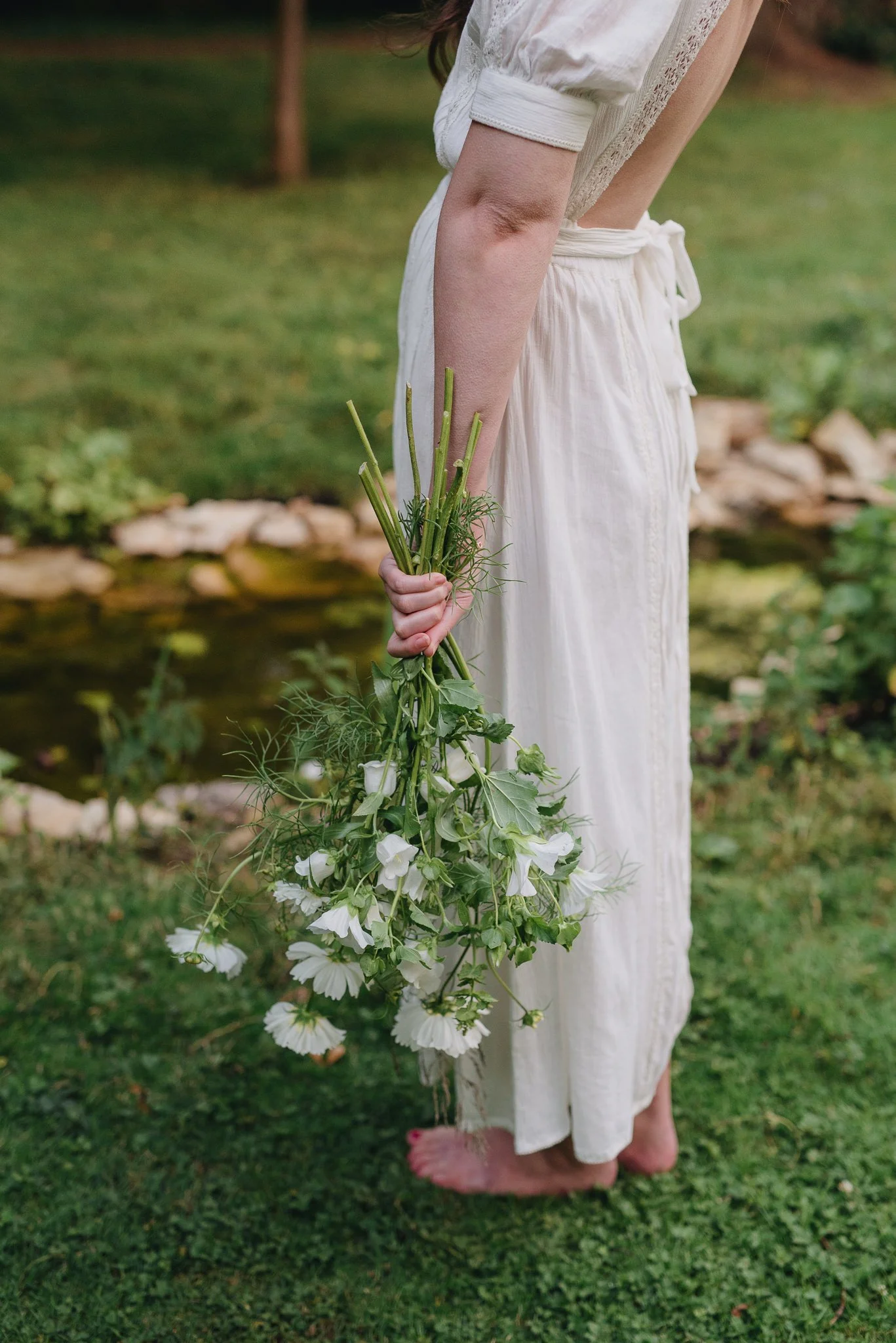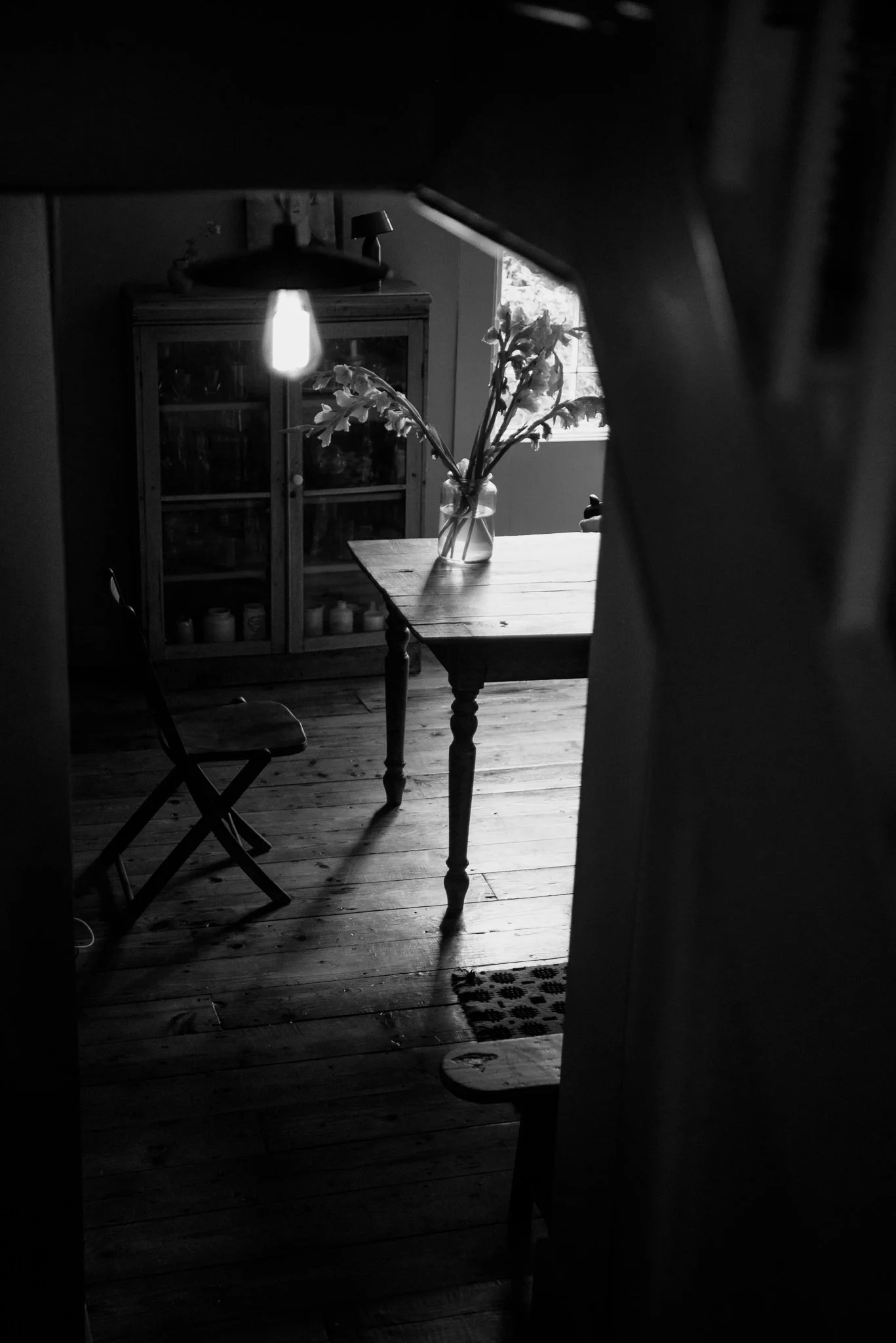Inspiration: Faceless Portraits
There’s something timeless and deeply evocative about photographs of people that don’t include their faces. While these images might not fit the traditional definition of a portrait, we believe they can be just as powerful, sometimes even more so. A portrait doesn’t always need to showcase someone’s facial expression to capture their essence. In fact, by removing the face from the frame, the viewer is invited to focus on other subtle, yet equally meaningful, visual cues: posture, gesture, clothing, environment, and objects. These elements can tell a story, evoke emotion, and reveal something personal or intimate about the subject, without ever showing their face.
In this article, we’ll dive into the creative world of faceless portrait photography. From the expressive language of hands and body language of connection to the details of objects and environments, we’ll explore a range of ideas to inspire your next portrait session. Whether you’re photographing someone else or creating self-portraits or still lifes, there are countless ways to capture identity and emotion beyond the face.
Connection
Photographing connection without showing your subjects’ faces invites a different kind of intimacy—one that speaks through body language, gesture, and presence rather than facial expression. Instead of focusing on smiles or eye contact, you can shift your lens toward how two people hold one another, the subtle way one leans into the other for support, or the quiet tenderness in a clasped hand. These physical cues are powerful indicators of emotion and relationship, and they often leave room for the viewer to project their own feelings or experiences onto the image.
Importantly, connection doesn’t always have to involve another person. It can be just as meaningful when captured between a subject and their environment, an animal, or an object. Think of the way someone gently touches the bark of an old tree, or how their hands pet an animal. A hand resting on a worn book, fingers brushing through tall grass, or feet half-buried in familiar soil—these can all speak to a deep, emotional tether to a place, object, or memory. In faceless portraiture, these quiet moments become the heart of the story.
Image by Mike Meller
Edited with Quest 50 Pathfinder
Image by Emilija Photography
Edited with Quest 50 Pathfinder
Image by Ben Wagner
Edited with Quest 50 Pathfinder
Image by Sherri Poirier
Edited with Quest 50 Pathfinder
Hands
Hands tell stories in a language all their own—so much so that we believe they deserve their own spotlight in the world of faceless portraiture. Hands can be expressive, tender, strong, or weathered, and often reveal details about a person’s life or emotions more vividly than we realize. A hand reaching, holding, gripping, creating, or resting can speak volumes without ever needing to show a face.
There’s something undeniably poetic about the way hands interact with the world around them. Whether they’re gently cradling a flower, skimming the surface of water, tying a shoelace, or holding a steaming mug, these small actions create a narrative rich with feeling and context. The connection doesn't need to be shared with another person—hands gripping a bouquet, turning the pages of a beloved book, or arranging something with care can evoke a sense of presence, purpose, or even memory. These gestures, often overlooked, become the emotional anchors of a faceless portrait, grounding the image in a moment that feels both personal and universal.
In this way, hands become storytellers—quiet, powerful, and beautifully human.
Image by Kate Cullen
Edited with Quest 50 Pathfinder
Image by Ben Wagner
Edited with Quest 50 Pathfinder
Image by Kate Cullen
Edited with Quest 50 Pathfinder
Image by Cassandra Casley
Edited with Quest 50 Pathfinder
Absence
You can capture a portrait of someone even without their physical presence in the frame. Absence can be just as powerful as presence when it comes to storytelling through imagery. A vacated space, a trace of movement, or a scene left undisturbed can all evoke the essence of a person. The empty chair pulled slightly away from the table, the unmade bed with a familiar fold in the sheets, the coat hung carefully by the door—these are not just objects or spaces, but outlines of a life. They suggest routines, relationships, memories, and moods.
This type of faceless portraiture invites the viewer to feel someone’s presence through the impression they've left behind. It turns the focus toward the environments and objects that hold emotional weight. A worn journal, a pair of shoes, a favorite coffee cup—these everyday items, when photographed with intention, can serve as deeply personal stand-ins for the subject themselves. They carry history, habit, and personality in their textures and placement.
In this way, faceless portraits can stretch beyond the physical body entirely. They become visual poems—subtle, symbolic, and full of meaning—where the viewer is asked to sense, rather than see, the subject.
Image by Lis Warren
Edited with Quest 50 Pathfinder
Image by Kate Cullen
Edited with Quest 50 Pathfinder
Image by Kate Cullen
Edited with Quest 50 Pathfinder
Journey
Turning the subject away from the camera—showing the back of their head, the slope of their shoulders, or just a part of their body within a larger scene—can shift the focus outward, allowing the environment to speak just as loudly as the person. This approach creates space for the viewer to experience not only who the subject is, but where they are, and perhaps even why they are there. In doing so, you open the door to themes of solitude, reflection, exploration, or peace.
Photographing someone as they face a wide landscape—a winding road disappearing into the distance, the quiet majesty of a mountain range, the expansive view from a hilltop—gives weight to their presence by honoring the path they’ve taken. The scene becomes part of their story. It may represent a literal journey or a more internal, emotional one. Either way, the environment is not just a backdrop, but a reflection of their state of being.
Image by Danielle Böswald
Edited with Quest 50 Pathfinder
Image by Bernadeta Kupiec
Edited with Quest 50 Pathfinder
Image by Mariah Arianna
Edited with Quest 50 Pathfinder
Image by Danielle Lindenlaub
Edited with Quest 50 Pathfinder
Anonymous
Sometimes, the most powerful portraits are the ones where the subject remains anonymous. By intentionally hiding the face—whether through framing, fabric, movement, or shadow—you invite the viewer to step into the image themselves. The lack of identifiable features turns the portrait into something more universal, more symbolic. It becomes less about who the person is, and more about what they are feeling, experiencing, or representing.
This kind of imagery can evoke a shared emotional language—grief, joy, longing, solitude, freedom—feelings that transcend individual identity. A faceless figure curled inward can speak to vulnerability or introspection. A silhouette with arms outstretched in an open field might express release or transformation. Without a face to guide interpretation, the story becomes more open-ended, allowing viewers to project their own memories, emotions, or desires into the scene.
Anonymity can also become part of the narrative itself. A hidden face—covered by a veil, a curtain of hair, or a garment—can suggest privacy, protection, mystery, or even rebellion. These visual choices don't erase identity; they often amplify it by focusing the viewer’s attention inward, toward what cannot be easily seen or named. In this way, anonymous portraiture can be deeply personal while still feeling expansive and inclusive—both specific and symbolic at once.
Image by Lis Warren
Edited with Quest 50 Pathfinder
Image by Ramblincowgirl
Edited with Quest 50 Pathfinder
Image by Arath Zumaya Muñoz
Edited with Quest 50 Pathfinder
Image by Cally Petersen
Edited with Quest 50 Pathfinder
Faceless portraiture invites us to look beyond the obvious and find meaning in the subtle—the way someone moves, connects, or simply exists within a space. By removing the face from the frame, we open up new ways of storytelling that are often more poetic, emotional, and universally relatable. Whether you're capturing hands, gestures, environments, or moments of absence, these portraits can speak just as powerfully—sometimes even more so—than traditional ones. They remind us that identity isn't always about what we see, but what we feel.


